
When you walk into Elmina, Chef Eric Adjepong’s first brick-and-mortar restaurant in DC’s U St. corridor, your eyes are immediately drawn to the thoughtful details throughout the space. It’s stunning, to say the least. From the beautiful Afro-centric artwork to the carefully positioned lighting, every aspect of the design works harmoniously to create an atmosphere that honors the chef’s Ghanaian heritage while delivering an elegant fine dining experience.
Behind this sophisticated cultural touchpoint stands Jimmie Drummond, a 34-year-old architectural visionary who has been quietly transforming DC’s hospitality landscape. Though you may not know his name, you’ve almost certainly experienced his work if you’ve visited popular Black-owned establishments across the District.
“Our clients become our friends. Their spaces become our homes. We treat it like our home,” Drummond explains between bites of Hamachi Crudo (his order — and Curried Corn Bisque, for me) during our interview at Elmina. This philosophy underpins his approach to design: creating spaces that feel authentic, intentional, and deeply connected to the cultural identity they represent.
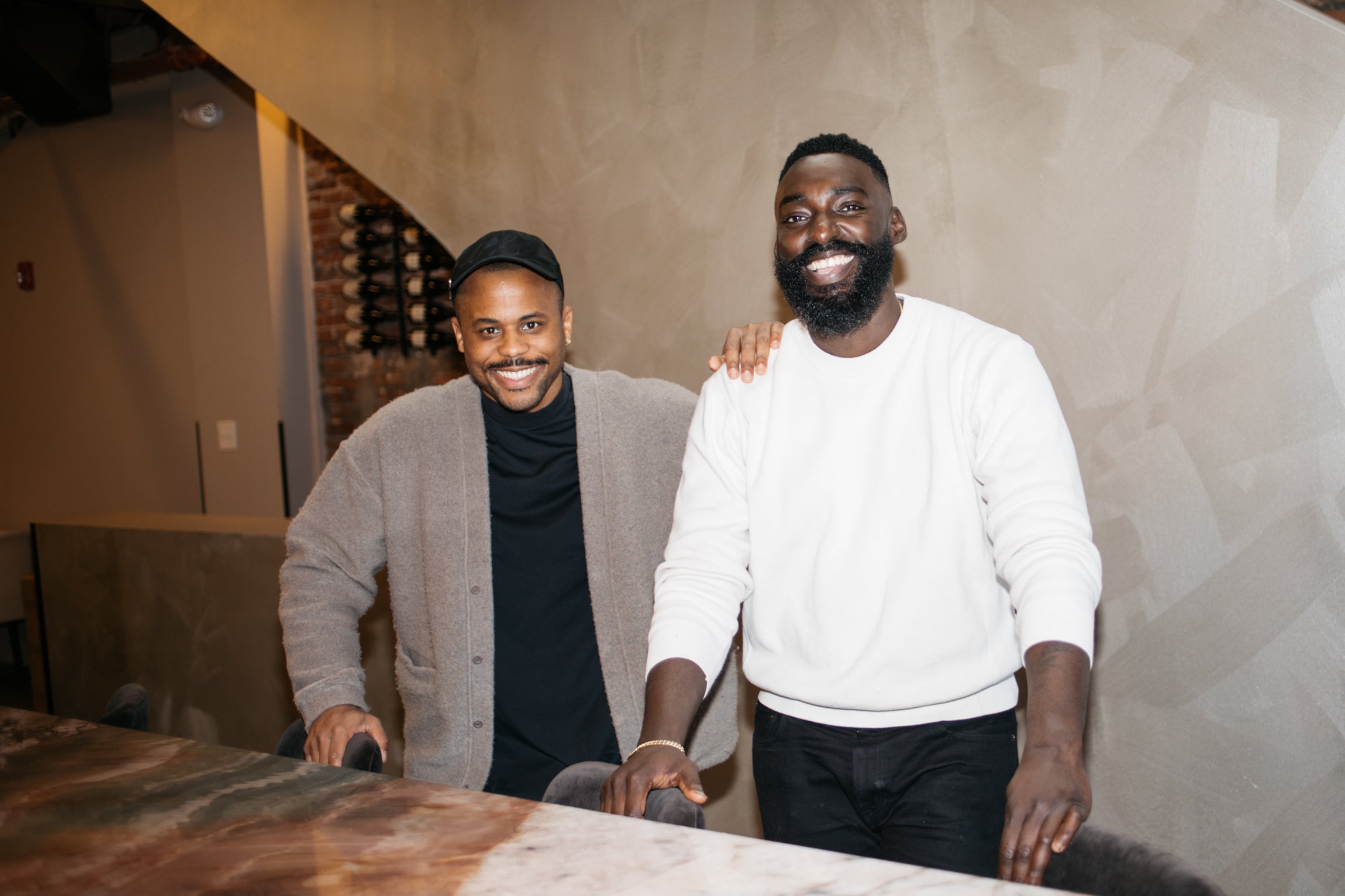
Drummond’s portfolio is extensive and growing rapidly. Beyond Elmina, he’s the design mind behind Bronze DC (Chef Keem Hughley’s former H Street spot), the newly opened Grounded by Mignon Hemsley and Danuelle Dowell, Llamabar in Navy Yard (yes, the spot you’ve likely seen all over TikTok), and Sost. If that wasn’t impressive enough, his firm is now working on the upcoming Mélange by Michelin-starred Chef Elias Taddesse in Anacostia, Gaia lounge, and the ambitious Sanaa Center in West Baltimore, which will include a 350-seat performing arts theater.
What makes Drummond’s work particularly significant is that many of these spaces have become cultural landmarks in DC. I’d known each of them before I’d known his impact, because they each have become places where community forms, where Black excellence is celebrated, and where creativity flourishes. Much like the firm Drummond himself has created with Drummond Projects.
Reflecting on his rising prominence, he still seemed to be taking it all in. “That means a lot,” he says. “To be honest, I’m just coming into the voice and the realization.” For someone whose work is so visible, Drummond himself has remained remarkably behind the scenes until recently (and way too humble for his own good. I mean the resume speaks for itself.).
In my short time with him, I recognized that part of what sets Drummond apart is his refusal to be boxed into traditional professional categories. “I am more interested in defining my profession as an interdisciplinary designer,” he explains. “Architecture or interior design won’t necessarily give it.”
This approach allows him to move fluidly between disciplines. Whether it’s through using emerging technology to integrate his work, with rendered AI artwork that captures a chef’s vision, developing structural solutions that transform challenging spaces, or crafting environments that encourage specific social interactions. At Elmina, this meant creating a container worthy of Chef Adjepong’s Michelin star ambitions while honoring West African cultural elements.
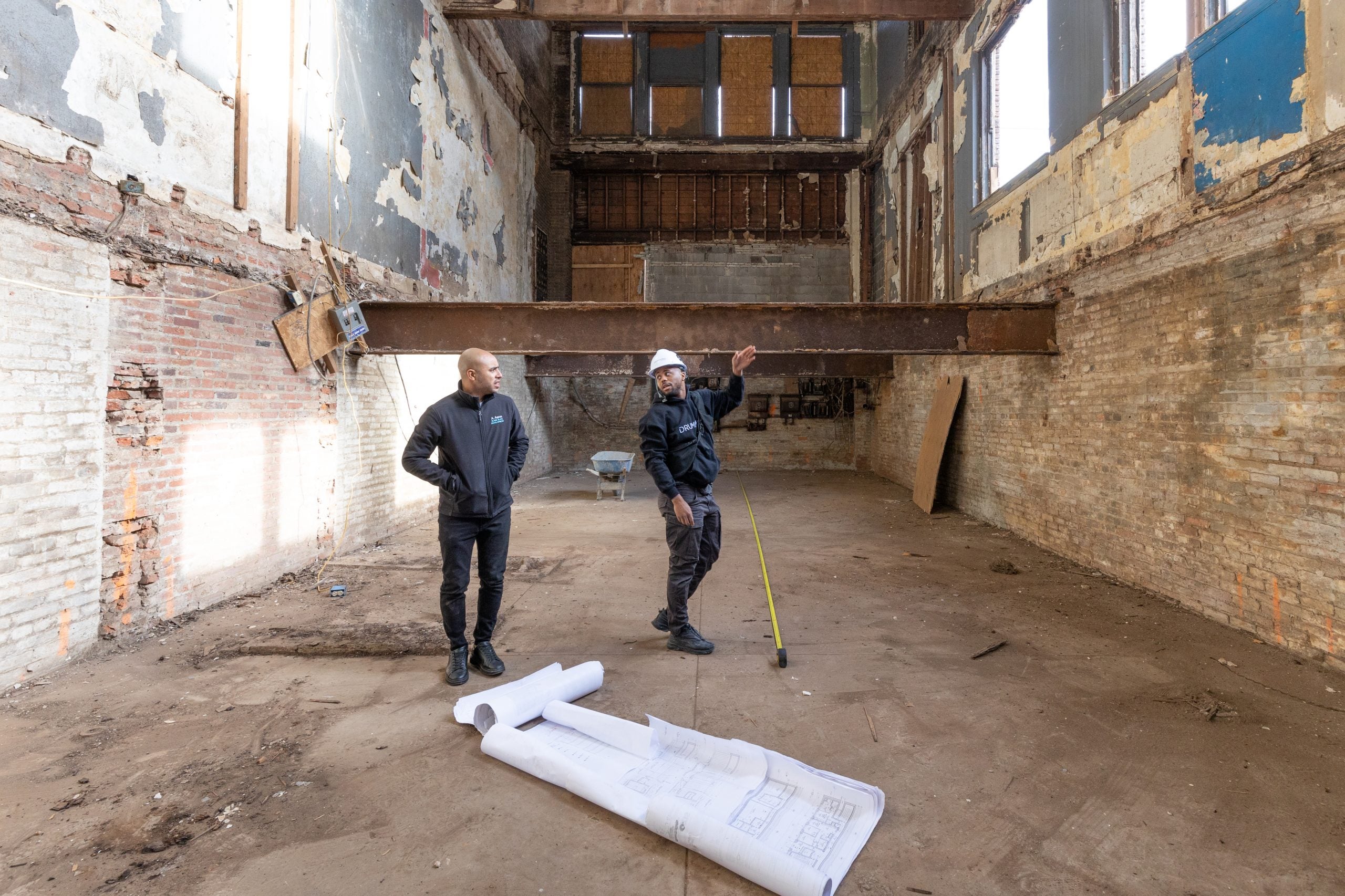
Drummond’s journey wasn’t a straight path. After graduating from Howard University (HU, you know) with a degree in interior design, he found that the doors to architectural firms remained stubbornly closed.
“Before going to grad school, I wanted to make some money after school. I wanted to really feel out the professional world. And quite honestly, it wasn’t going straight in. Everywhere said, ‘Sorry, you’re not where you need to be,’” he recalls.
This rejection fueled his determination. He moved to New York with, as he puts it, “a different energy,” working various jobs including at a fabrication shop and for home builders while setting his sights on SHoP Architects, the firm behind Brooklyn’s Barclays Center.
“I knew I would not get a shot if I just went the whole traditional route,” Drummond says. “I took an internship while having a full-time job, while in grad school.” After applying two years in a row, he finally landed the internship, marking a pivotal moment in his career.
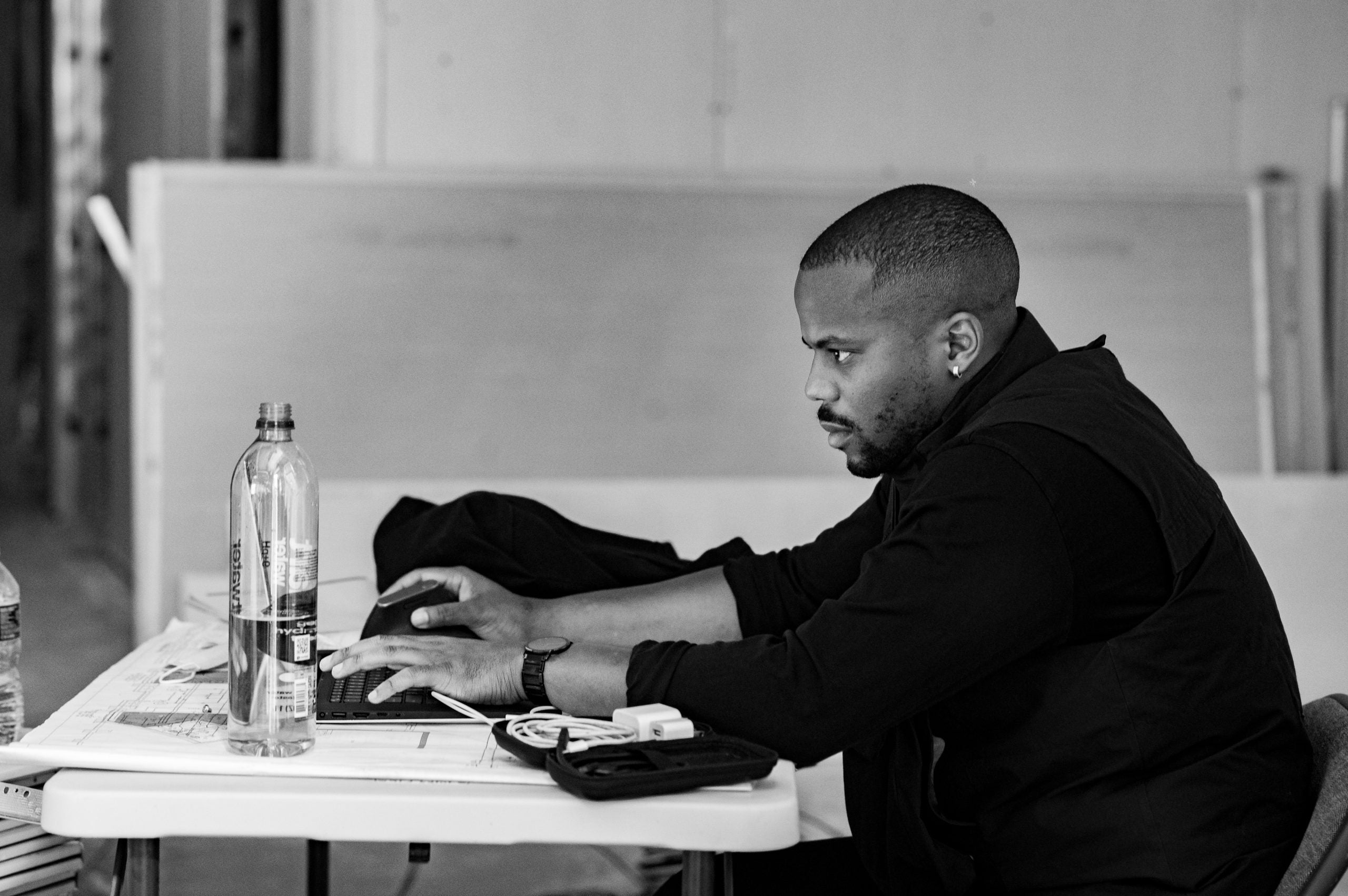
“Our journey has to start. We can’t start at the same starting point as they do,” he explains, acknowledging the extra hurdles Black designers often face. “And I learned that from Howard.”
Today, Drummond leads a growing team of young designers—the average age is around 30—across some 40 active projects, including schools, housing developments, and cultural spaces. His days start at 5:30 AM and often don’t end until 10 PM. During our conversation, he mentions a new affordable housing project with Maia Shanklin Hall, whom he describes as “the Oprah of development,” that is a part of a redevelopment at Barry Farms community that will have 610 units.
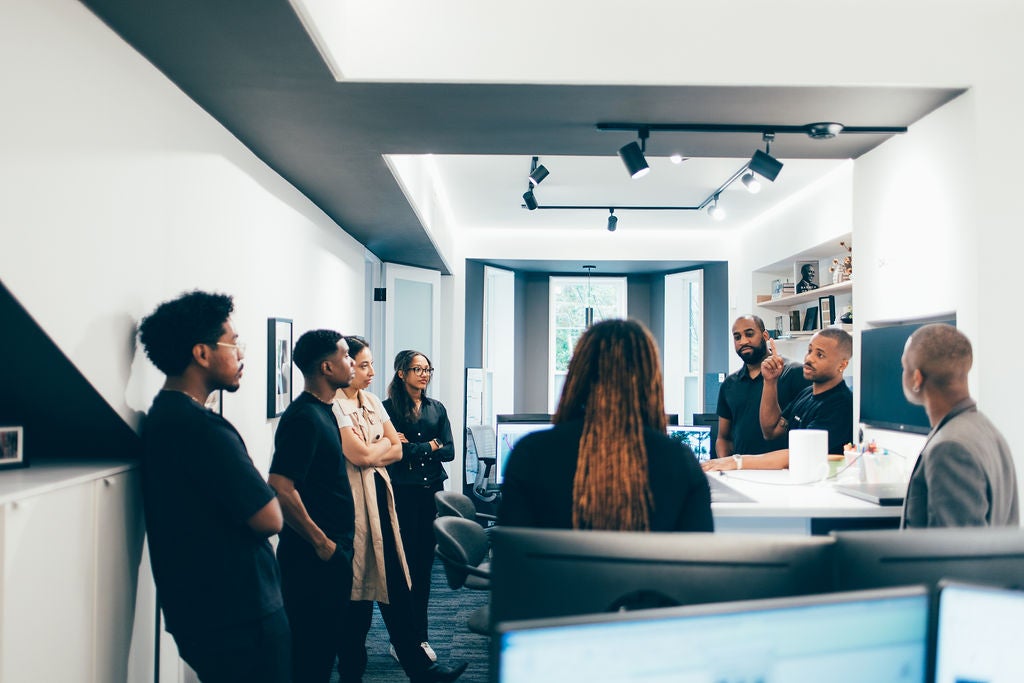
That’s not all he’s doing. These projects align with Drummond’s appearance at a public forum with DC Mayor Muriel Bowser in October 2024, where he discussed his commitment to creating “impactful, inclusionary” spaces. His firm is working on community-focused housing projects and mixed-use developments that will bring over 2,000 affordable housing units to areas including Congress Heights, Barry Farms, and Urban Village.
The social equity dimension of Drummond’s work is clearly as important to him as the aesthetic outcomes. When asked what advice he would give to young Black architects entering the field, his response is immediate and passionate.
“Be bold. Know that your voice needs to be heard,” he urges. “It’s different from knowing that or wanting to do something, but knowing that you need to do it.”
He continues, “Black designers need to speak up. They don’t speak up. We’re not asked to, that’s for sure. We’re never asked to just say it. Say it.”
For Drummond, inserting Black voices into spaces—whether literally through design or figuratively through participation in professional contexts—is essential cultural work. “It’s my idea of calling it Black spaces,” he says. “Half the time we just don’t say anything.”
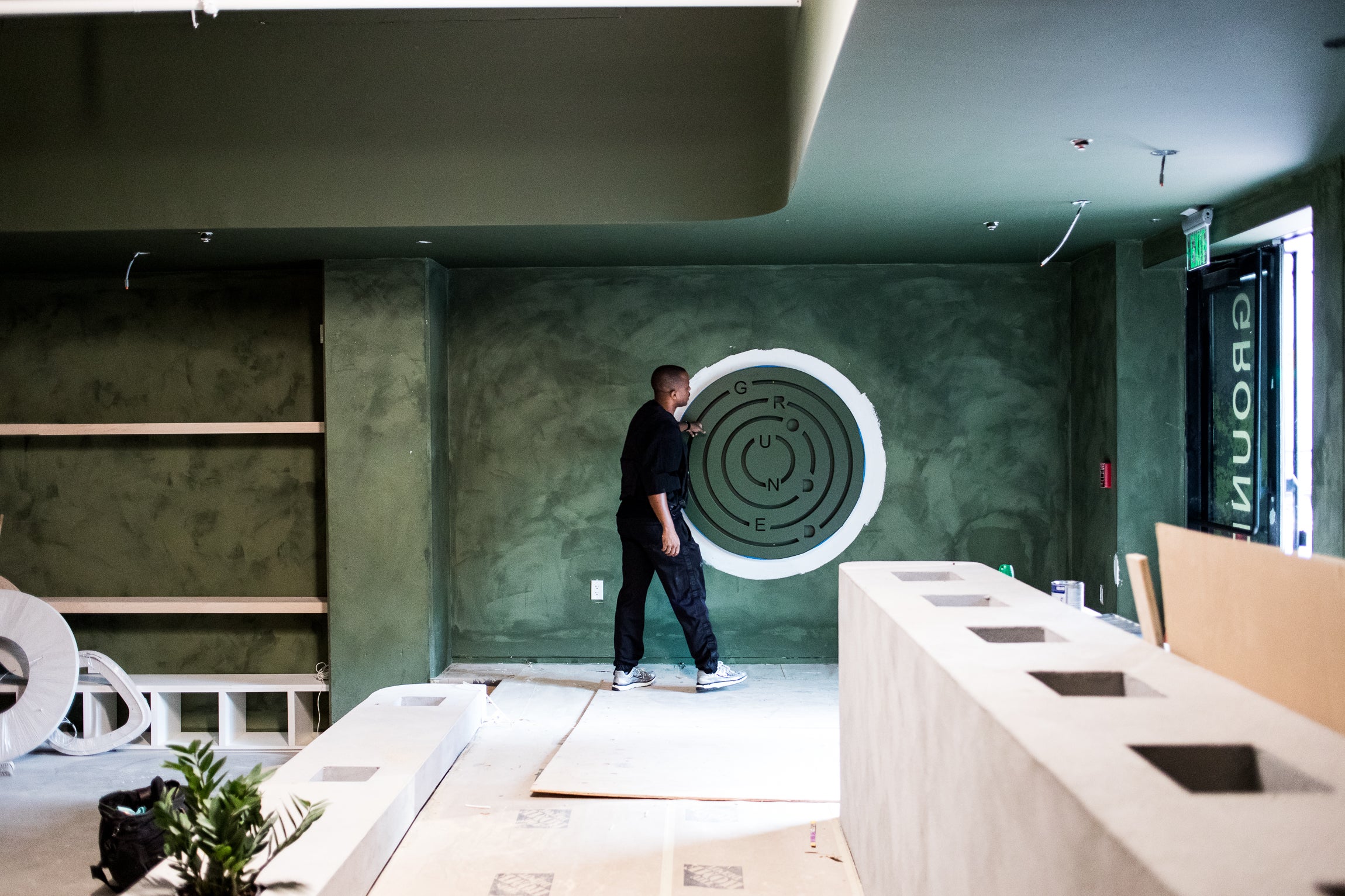
As for his own ambitions, Drummond dreams of collaborations with cultural innovators like Pharrell Williams. “If you think Pharrell is at his climax, think again. I think he’s going even further,” he says, envisioning designing not just a gallery for the multi-hyphenate star but “a space to actually cultivate the next best Pharrell.”
He also mentions aspirations to work on legacy projects similar to the Obama Library or spaces for figures like LeBron James, noting that most iconic architectural commissions still go to designers who don’t look like him.
“I’m super confident because if we were to get a call it would be the most exciting project,” he says. “Architects come out maybe mid-40s, and think they can start a practice. Not to say I’m the only one that’s 34 with starting projects, no, but I really have realized that I am very much so in the minority in this group.”

As our conversation winds down and Chef Adjepong stops by our table, the rapport between client and designer is evident. The chef proudly acknowledges how Drummond took his initial vision and “2.0-ed it, 3.0-ed it” to create something beyond his expectations.
Which seems to be Drummond’s specialty. His career has been all about taking someone’s cultural vision and elevating it through design that respects its roots while pushing toward new possibilities.
For a profession where Black practitioners remain woefully underrepresented—making up less than 2% of registered architects nationally—Jimmie Drummond’s rising prominence is sure to keep growing. And we’re just glad to have a front row seat.






